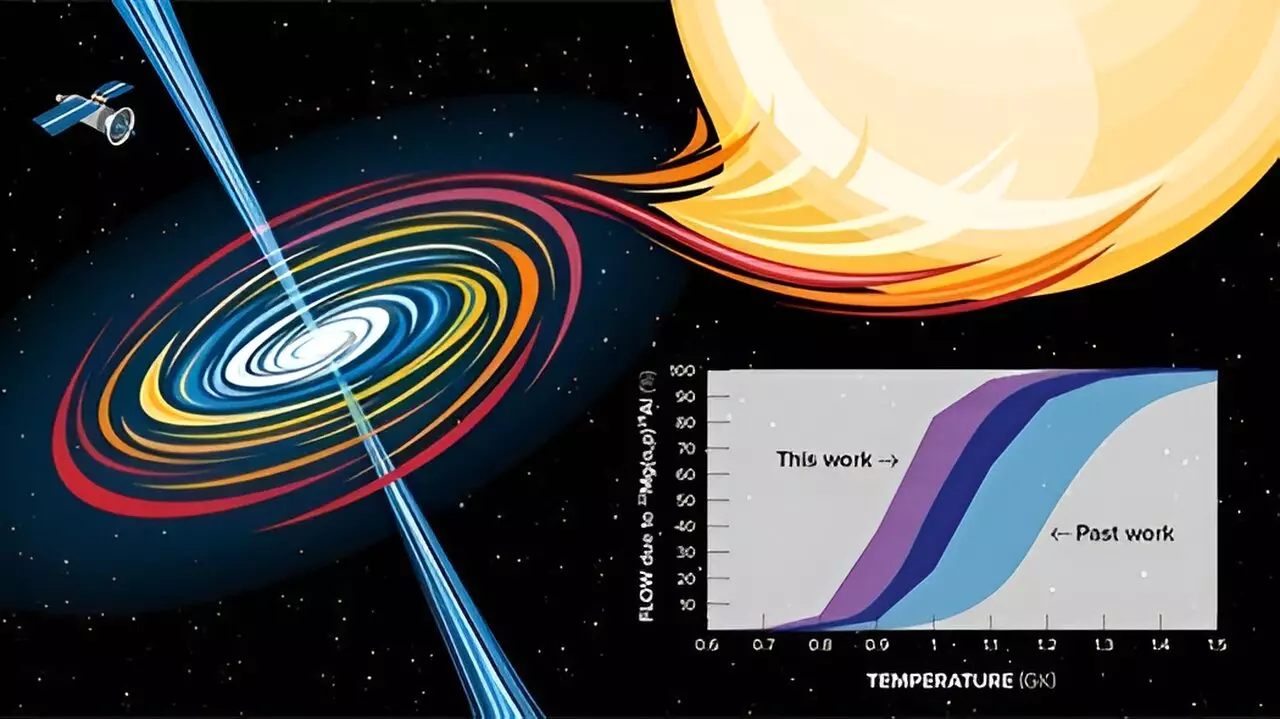X-ray bursts (XRBs) are powerful explosions that take place on the surface of a neutron star when it absorbs material from a nearby companion star. These explosions are a result of increasing temperatures and densities on the surface of the neutron star, which trigger a series of thermonuclear reactions leading to the creation of heavy chemical elements.
A recent study published in Physical Review Letters focused on the investigation of one of these reactions, namely the 22Mg(α,p)25Al reaction. This reaction involves magnesium-22 and helium-4 combining to produce a proton and aluminum-25. The rate of this reaction plays a crucial role in shaping our understanding of XRBs and determining the mechanisms that drive these explosive events. The researchers behind the study discovered that the rate of the 22Mg(α,p)25Al reaction is actually four times higher than previously measured.
To measure the 22Mg(α,p)25Al reaction, scientists employed the use of the Argonne Tandem Linac Accelerator System (ATLAS), which is a Department of Energy user facility located at Argonne National Laboratory. By utilizing inverse kinematics, researchers were able to accurately measure the reaction by creating an in-flight radioactive beam with the ATLAS in-flight system. The beam was then directed to the MUlti-Sampling Ionization Chamber (MUSIC) detector filled with pure helium gas, replicating the conditions present during XRBs.
The experiment conducted using the ATLAS facility provided a new direct measurement of the angle and energy-integrated cross-section of the 22Mg(α,p)25Al reaction. This cross-section serves as a gauge of the likelihood of the reaction occurring. The results of the study indicated that the probability of the 22Mg(α,p)25Al reaction happening is significantly higher than previously thought, suggesting that the 22Mg waiting point may be bypassed by this reaction. Furthermore, the researchers observed that the reaction initiates at lower temperatures than initially anticipated, shedding light on the fundamental physics governing the nucleosynthesis reaction flow through the 22Mg waiting point in XRBs.
The insights gained from this research are invaluable in enhancing our comprehension of XRBs, as well as the intricate nuclear reactions that underlie these cosmic phenomena. By accurately determining the rates of crucial reactions like the 22Mg(α,p)25Al reaction, scientists can refine their models of XRBs and advance our knowledge of the processes driving these explosive events in the cosmos.
The study on the 22Mg(α,p)25Al reaction represents a significant step forward in our exploration of XRBs and the role that nuclear reactions play in shaping these spectacular cosmic events. Further research in this field holds the promise of unlocking deeper insights into the nature of XRBs and expanding our understanding of the universe’s most enigmatic phenomena.


Leave a Reply